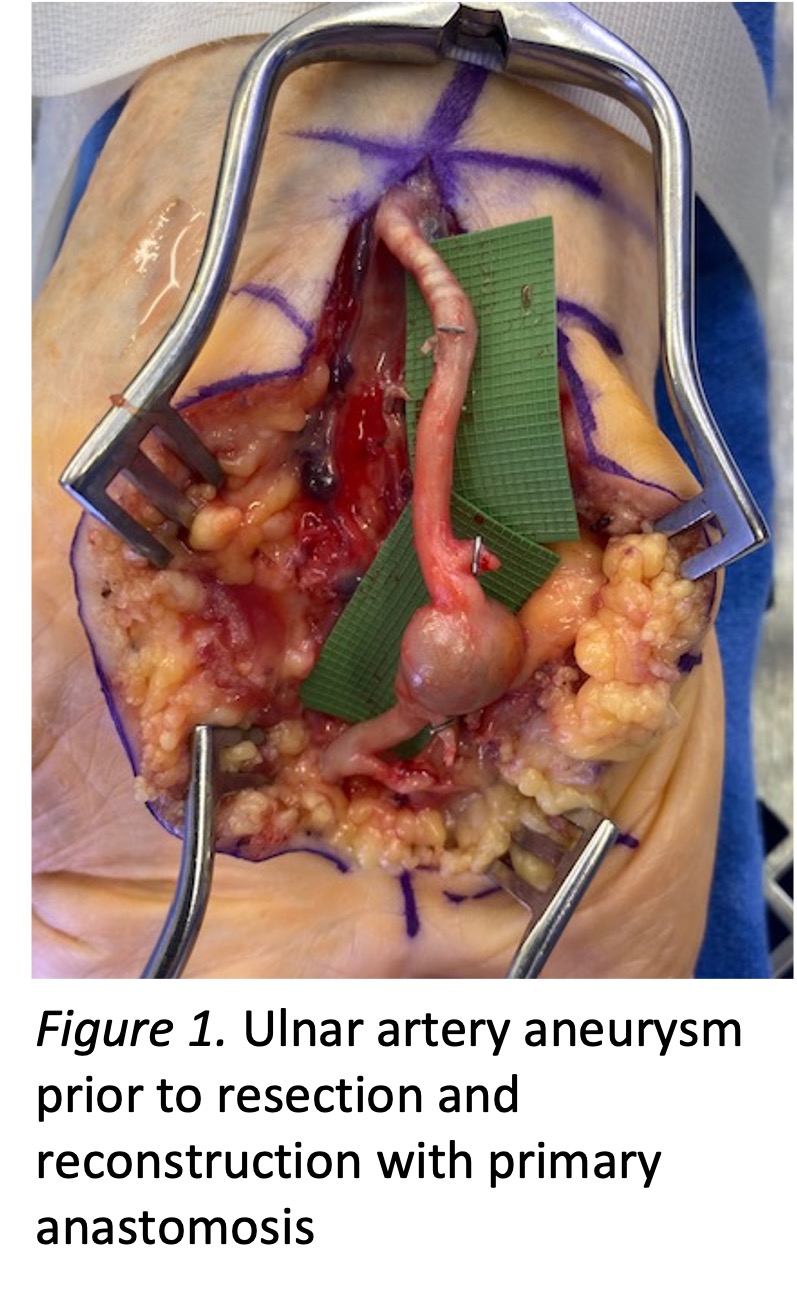Hypothenar Hammer Syndrome
Sarah Elizabeth Severance, MD, MS, Lauren Marquette, MD, Anush Motaganahalli, Ashley Gutwein, MD, Andrew Gonzalez, MD, JD, Joshua Adkinson, MD.
Indiana University, Indianapolis, IN, USA.
Objective & Description: The ulnar artery is the most common location for upper extremity aneurysmal degeneration. Hypothenar hammer syndrome is a classically described, rare vascular disorder resulting from injury to the ulnar artery at Guyon’s canal. Symptoms can include ischemia or pain in the digits. Case Description: The patient is an 83-year-old man no history of trauma to the hypothenar eminence who presented to the Vascular Surgery clinic with 3 months of persistent pain, pulsatile mass over the hypothenar eminence in his right hand. He had normal digital perfusion, and a palpable right radial pulse. Duplex ultrasonography demonstrated a 1.7 cm aneurysm of the ulnar artery at the level of the wrist. Diagnostic angiogram redemonstrated the aneurysm and confirmed in complete palmar arch. This video presentation provides technical details of the repair. A ”Z” incision was made over the hypothenar eminence across the wrist. Guyon’s canal was sharply opened, and the ulnar nerve identified and protected. The ulnar artery including the aneurysm was circumferentially dissected (Figure 1). The aneurysm was resected, and due to adequate redundancy, the ulnar artery was reapproximated primarily in an end-to-end fashion. The wound was closed, and a short-arm splint was placed. The patient was discharged post-operative day one and returned to clinic one month later with patent ulnar artery repair and a well-healed wound. Discussion: Hypothenar hammer syndrome is a rare but potentially debilitating disorder that should be considered based on exam with or without a history of trauma. Definitive diagnosis and treatment options are dictated by angiography, and surgical correction offered our patient symptom relief. 
Back to 2022 Abstracts
